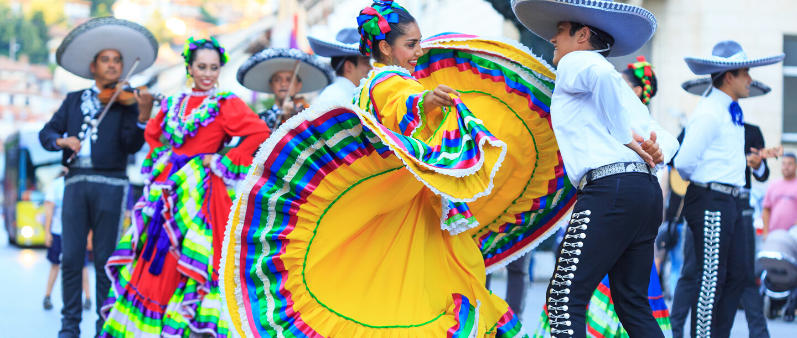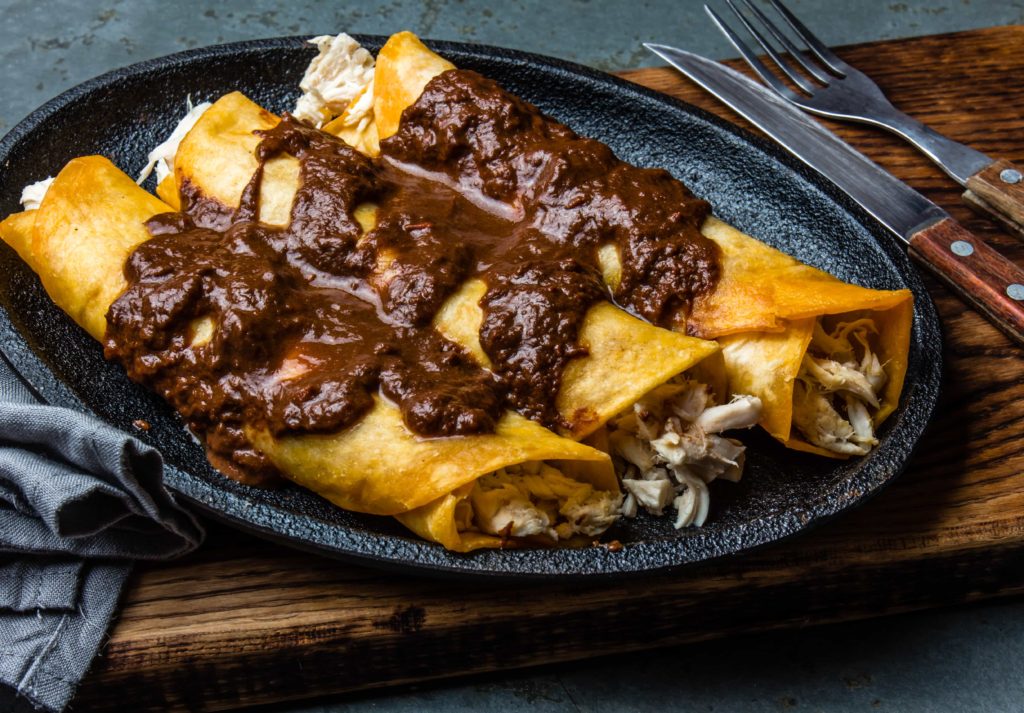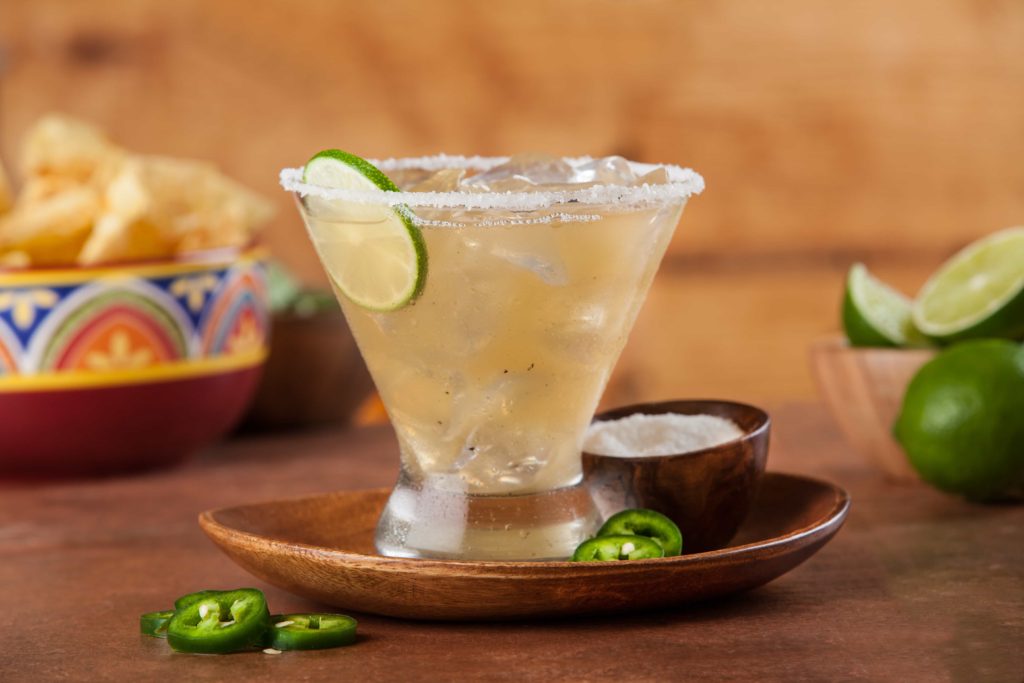
What is Cinco de Mayo? Facts, History and Amazing Margarita & Mole Poblano Recipes
History of Cinco de Mayo and the Battle of Puebla
Though Cinco de Mayo may call to mind images of booze-soaked co-ed parties, few know the true history behind this Mexican national holiday; to honor the anniversary of the Battle of Puebla, or Batalla de Puebla, which occurred on May 5th, 1862.
In that battle, a rough and tumble army of 4,000 Mexican troops defeated a well-equipped French army of over 8,000 men. This victory bolstered the Mexican army and established a feeling of unity for the Mexican people after over a decade of civil war and conflict with other nations.
Although that victory was to be short-lived, the Mexican people did eventually earn their independence from France in 1866, effectively marking the end of European invasion in the Americas.
It has been argued that had France not been embroiled in a conflict in Mexico, the nation could have sent forces to assist the Confederate Army in the American Civil War, thus changing the course of history in a profound way.
Cinco de Mayo is a big deal in the U.S. but in Mexico, it’s really only celebrated in Puebla. One of the reasons why Cinco de Mayo is such a celebrated holiday in the U.S. today is due to the small but meaningful victory celebrations held in 1862 by Mexican Americans working in California upon hearing the news of the Battle of Puebla.
Those parades and parties grew each year, eventually transforming from anniversary celebrations, into more broad celebrations of Mexican heritage in California. The holiday gained national interest after 1933 when President Theodore Roosevelt created the “Good Neighbor Policy” or Política de buena vecindad, encouraging better relations with Latin America.
During the fight for civil rights begun by the Chicano Movement in the 1960s, Cinco de Mayo became a rallying cry for Mexican Americans seeking better treatment and protection from repression and police brutality.
From Cinco de Mayo to Drinko de Mayo
Then in the 1980s the beer and wine industry caught on to the growing interest in Cinco de Mayo and began marketing campaigns promoting the holiday. This widespread visibility increased the popularity of Cinco de Mayo events, though they largely remained Mexican-American celebrations.
In the 1990s the holiday gained popularity amongst college students with an emphasis on heavy drinking and unfortunate acts of cultural appropriation. This behavior was so rampant, that in 2005 Congress called on the President to ask U.S. citizens to be more respectful and appropriate in their celebration of Cinco de Mayo and the holiday was recognized as a U.S. national holiday. Even still, the Friday closest to the 5th of May remains one of the highest sales days for alcohol in the United States.
Cinco de Mayo Traditions – Running of the Chihuahuas and Mole Poblano
These days the largest celebration of Cinco de Mayo is in Los Angeles, California. Most celebrations include live mariachi music and Baile folklórico, a traditional Mexican folk dance.
Several U.S. cities hold a Running of the Chihuahuas event where the small dogs of Mexican origin race adorably to the finish line. It’s traditional to eat all types of Mexican food on Cinco de Mayo, but the official dish of the holiday is mole poblano, a dish with origins in the state of Puebla in Mexico.
Celebrating Cinco de Mayo while Social Distancing
Due to the continuing situation with the global pandemic, our Cinco de Mayo celebrations will likely involve fewer festivities this year, but that doesn’t mean we have to forgo them entirely while we’re practicing social distancing. This could be a really great opportunity to learn more about Latin American history, try out Mexican recipes at home, or even just perfect your margarita recipe!
Mely Martinez’s Mole Poblano Recipe
Here is a fantastic recipe for traditional mole poblano, created by Mexican American chef and food blogger, Mely Martinez.

Origins of the Word Mole
In her accompanying blog post, Mely discusses the etymology of the word mole, which comes from the word “milli” or “molli” meaning “sauce” or “concoction” in the Náhuatl language. This language has been spoken by the Nahua peoples of central Mexico since the 7th century.
Mely’s recipe was adapted from a mole poblano recipe created by Dame Diana Kennedy, an English born authority on Mexican cuisine. Kennedy has authored nine books on the subject, including The Cuisines of Mexico, a text which dramatically changed how Americans view Mexican cuisine. She is a very interesting woman, who has worked to catalog the native plants of Mexico and created a foundation to preserve the food heritage of Mexico.
Netflix’s Latin History for Morons
If the adults in your family are looking to learn more about the long and remarkable history of Latin America, check out John Leguizamo’s Latin History for Morons on Netflix. Although he uses crude language at times, the information he shares will be eye-opening for most viewers. I never knew how much I didn’t know about Latin American history until I watched this special.
Latin American History for Kids
If you have kids, consider sharing what you’ve learned here and elsewhere as a history lesson. It might even count towards a homeschooling credit! Here is a great resource on Latin American history created especially for kids: https://kids.kiddle.co/Latin_America
Speaking of history, let’s talk about the mysterious history of the most famous Mexican cocktail, the margarita!
Margarita History and Recipes
The confirmed origin of the margarita cocktail remains a mystery, but several accounts claim that the cocktail has its roots in 1930s Tijuana, Mexico. Some claim that it was created in Juárez, Chihuahua at a bar called Tommy’s Place in 1942. Still, others say it was invented by a Dallas socialite named Margarita Sames at a party in her vacation home in Acapulco in 1945.
What is known, is that the first publication of a recipe for a margarita cocktail was in Esquire magazine in December of 1953. This recipe calls for one ounce of tequila, a dash of triple sec, and the juice of half a lime or lemon.
Many variations of the margarita have sprung up in cocktail bars around the world. Why not get creative this Cinco de Mayo and see if you can create your own twist on this classic cocktail? My friend and cocktail expert, Meaghan Q Sinclair shared her margarita variation with me which she calls the Lovely Loretta.

Booze Époque’s Lovely Loretta Margarita
- 1 1/2 ounces Vida Mezcal or any tequila
- 1 ounce honey syrup (1 part honey, 1 part water)
- 1 ounce lemon juice
- 1/4th ounce fresh juiced ginger root
Measure ingredients into a cocktail shaker. Shake with ice and strain into a glass with a sugar & salt rim (2:1 ratio sugar to salt) Garnish with fresh ginger root and a nasturtium blossom.
Meaghan also shared her go-to classic margarita recipe, created by Julio Bermejo at Tommy’s in San Francisco.
Julio’s Classic Margarita
- 2 ounces reposado tequila
- 1 ounce agave syrup (1 part water, 1 part agave nectar)
- 1 ounce fresh-squeezed lime juice
Shaken and served over ice with a salt rim.
However you end up celebrating this Cinco de Mayo, make sure to do so with respect for the Mexican people and the heritage of this festive holiday. ¡Viva México!
Celebrate Cinco de Mayo by Learning Spanish with Pimsleur!
You really do have the time. Learn the new language you’ve always wanted to speak and turn your downtime into found time. Pimsleur lessons stream directly to your home and are easily accessed through your device of choice—mobile phone, computer, tablet, or Amazon Echo devices. Learn on your own or with up to 4 family members for the same price. Gain real-world conversational skills in the comfort of your home or anywhere life takes you in the future.
Save Up to 20% Now
use code CINCO

No Comments for "What is Cinco de Mayo? Facts, History and Amazing Margarita & Mole Poblano Recipes"